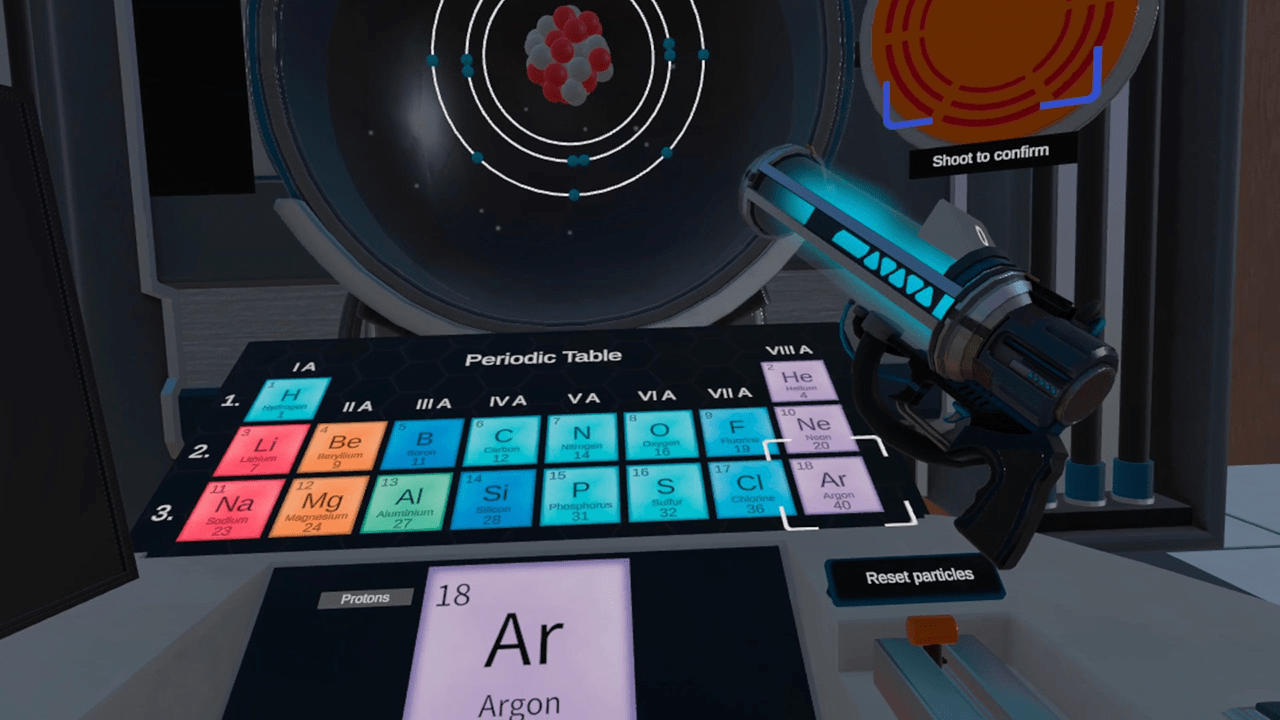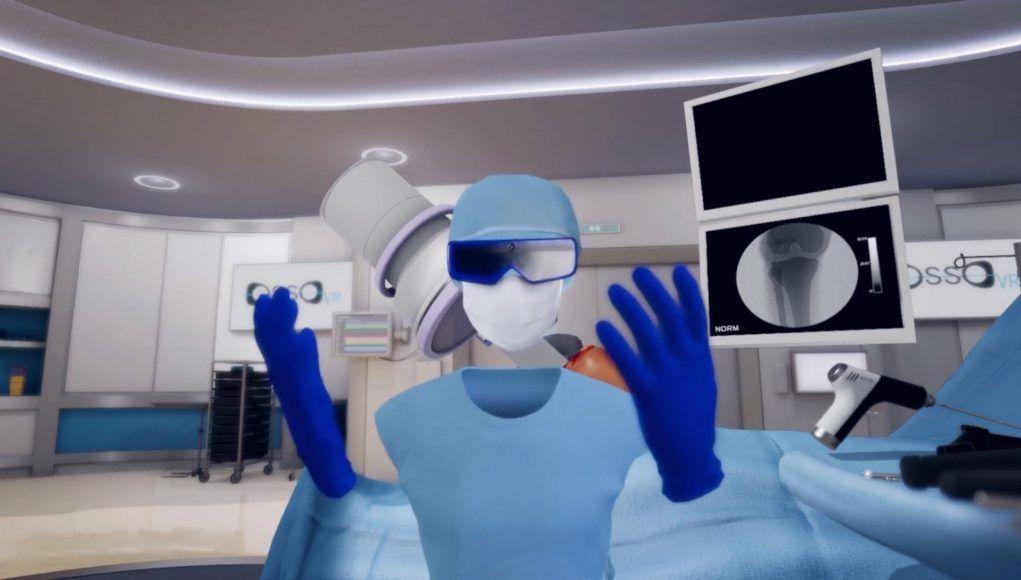7 Benefits of Virtual Reality (Explained!)
14/12/2022
Virtual reality (VR) has the potential to revolutionize the way we see the world around us. From healthcare and manufacturing to education and training, VR has been a game-changer in most fields. A high interaction level and immersive experience make it a great tool, especially in the education system.
One of the most striking benefits of virtual reality in various industries, especially for education and training, is its immersive experience.
Digital tools created with VR technology, such as 3D learning environments, allow the learner to grasp the theoretical concepts much deeper.
VR can provide an immersive learning experience that is both interactive and engaging, allowing the user to learn by doing. As virtual reality technology continues to grow and refine, more and more sectors will use it in their workflow to improve efficiency and productivity.
In this article, let’s discuss some of the most important benefits of virtual reality technology in various fields and why it is highly regarded in multiple sectors.
What is virtual reality?
Virtual reality, or VR, is a technology where the processing power of computers is used to create simulated 3D environments that feel realistic. With virtual reality technology, you are part of a scene rather than merely watching it on a screen.
Virtual reality intends to simulate an environment so that all your five senses are engaged and the atmosphere created feels real.
You can interact with the objects as if they were real and physically present and have an immersive, rich experience.
VR technology is still in its early stages, but the improvements that we have made are quite astounding. Three main categories of VR technology are being used in many sectors today, including education and training.
Non-immersive virtual reality technology
A non-immersive virtual reality is one of the most common types of VR out there. As the name suggests, the computer-generated virtual environment generated here is not very immersive.
The user remains aware of the simulated environment and, rather than being a part of the environment, can control certain aspects while remaining outside.
Computer games with virtual worlds are good examples of non-immersive VR technology.
Semi-immersive virtual reality technology
The semi-immersive VR technology is quite common in the immersive education and training sectors. The experience is partially immersive, and the user can control and interact with the virtual world's various aspects.
Flight simulators for trainee pilots are a great example of this technology.
Fully immersive virtual reality technology
Fully immersive VR generates the most immersive and realistic experience. Although no truly fully immersive virtual reality technologies are available right now, the advances are so rapid that we might see them sometime soon.
Virtual reality creates believable, multi-dimensional, immersive experiences that are interactive. It is one of the main reasons that virtual reality is taking many business sectors by storm.
Industries that could benefit the most from virtual reality technology
There is hardly any industry that won’t benefit from virtual reality. The power of creating an immersive and interactive experience that feels real has many implications in various sectors.
Some of the industries that virtual reality can potentially revolutionize include the following.
Education and training
One of the biggest advantages of virtual reality in education and training is that it can enhance the student’s engagement with the study material. Virtual reality can create a world around the student that feels real and immersive.
Several peer-reviewed studies have proved that improving student engagement greatly impacts learning outcomes. Virtual reality can provide an excellent platform in this regard.
The gamification of concepts can completely transform the way a student learns.
Implementing virtual reality in classrooms can allow students to see the concepts unfold in front of their eyes.
They can interact with the various aspects of the virtual world, helping them learn and understand something beyond the written word.
Virtual reality technology is especially useful in teaching STEM subjects to students. For instance, virtual reality lessons on reaction balancing from Futuclass can help students understand the concept of chemical reactions in a way that a book can’t.

A student can perform experiments, learn core reaction concepts, and balance them in vivid detail.
Another great benefit of virtual reality in the education and training sectors is the ability to gamify the concepts.
The level of interaction with the virtual reality technology allows the student to see and interact with the elements of the simulated world like a video game.
The gamification of concepts has been shown to improve understanding and retention among students.
Healthcare
Virtual reality has already made a huge impact in healthcare and medicine. Healthcare professionals use virtual reality during their training for surgeries when cadavers are limited or not available.
For instance, an orthopedic surgeon can practice complicated surgery in a virtual setting.


The virtual reality headset allows surgeons to practice surgeries on virtual bodies, helping them improve their skills. VR can also be of great help in the treatment of mental health issues.
This new technology has been extensively used in treating mental disorders such as PTSD and anxiety.
Another great example of VR implementation in healthcare is the EaseVRx for treating pain. The system uses cognitive and behavioral therapy, attention-shifting, and introspective awareness to reduce pain perception. The technology was recently approved by the US FDA as well.
Retail industry
Online shopping has killed retail stores, but shopping online does not have the same experience as shopping in a store. All this is set to change as we move into the future of VR technology.
One way shopping online can drastically change using VR is by using features like body scanning technology.
Imagine if you could try out the clothes you like online before purchasing them. With virtual reality equipment, it is becoming possible.
With virtual reality and augmented reality, the customers will know exactly what they are buying and how it will look on them.
The technology might also make fast fashion more sustainable because the customers will buy clothes that fit them.
Various online retailers are trying to implement VR technology. Fashion houses like Hugo Boss have already taken a step in the right direction by participating in the Metaverse fashion week held in March 2022.


Tourism
Another industry that can benefit from the implementation of VR is travel and tourism. The tourism industry was the worst hit during the recent pandemic and lockdowns. Traveling in person was out of the question with people confined to their homes.
However, with VR, things can change. Imagine exploring the streets of Rome from the comfort of your home in New York! With the virtual world, it is quite possible.
In the post-covid world, VR tech can help you experience a tour virtually before you decide to buy it.
Thomas Cook, one of the biggest tourism companies in the world, launched their “try before you fly” VR experience in 2015. With the recent advances in VR tech, the experience has improved greatly.
Architecture and interior design
Virtual and augmented reality revolutionize how architects and interior designers experiment with their designs. VR can help architects see how the building will look and feel. You can navigate through the virtual building long before it is made.
Although architects have been using 3D models, VR technology opens a new world to them. The immersive experience of VR technology can help architects perfect your homes before they are constructed.
Interior designers can also take benefit of VR to plan out the designs and layouts of rooms.
Sports and entertainment
Sports and entertainment have already started using VR and AR technologies in their products. Several VR companies have already begun organizing special screenings of movies and sporting events with VR experiences.
Several companies like Big Screen VR have already started offering fans sporting events like the Superbowl in VR.
You can also host watch parties in Metaverse, which can take your experience to a different level.
Automotive and manufacturing
In the automotive and manufacturing industry, VR technology allows engineers to experiment with the look and build of a new car design before commissioning a prototype.
Various well-known brands like Jaguar, BMW, and Ford have been using VR in their design process to fine-tune their prototypes.
Benefits of virtual reality
Several global brands are creating virtual reality experiences to improve engagement and inspire buyers. Here are seven benefits of virtual reality in several industries.
1. Learning can become fun
The biggest benefit of using VR, especially in the education industry, is understanding STEM subjects. The far too dry and abstract concepts can be infinitely more entertaining using virtual reality.
Concepts that are difficult to grasp by reading texts can come to life with virtual environments. Students become more interested and start to learn by doing virtual experiments.
VR can change how we teach and learn arts and humanities. Imagine being able to transport the students to the streets of Rome with the click of a button. When the students see and feel the virtual environment, they are immersed in the setting, making them understand the subject matter more deeply.
VR has successfully gamified the learning experience. Students are more involved, participate with more interest, and learn more quickly.
Apart from students, virtual reality can also help provide highly technical VR training in complex concepts as well.
2. On-the-job learning made possible
VR can play a huge role in replicating hazardous scenarios with virtual environments in the defense, manufacturing, and aviation sectors. Trainees can hone their skills, fail, and learn using VR without risking their lives.
VR has the potential to make the impossible possible for these industry sectors. For instance, learning on the job is not viable in sectors like defense, manufacturing, aviation, oil, and gas.
Non-stop production lines, hostile work environments, or life-threatening situations make it impossible to lean on the job.
Virtual training will change that, and it will also minimize costly accidents saving companies a lot of time and money.
3. Speed up the learning process
In today’s fast-paced world, time is more valuable than ever in humanity's history. Training employees quickly and efficiently is the need of the hour.
VR can create a distraction-free immersive experience that can help the trainees train better and have a focused approach. The result is a faster learning process.
Besides, VR-based training can also help employees and trainees retain their knowledge for longer.
4. The “try-before-you-buy” concept
In an increasingly online world, trying out a product before you buy it has become a rarity. However, with the implementation of VR, the concept can make a comeback.
Companies worldwide are trying to implement VR to give their potential customers an experience of a product before they buy it. The concept can help customers make educated buying decisions and likely build brand loyalty.
One of the best examples of implementing VR is the VR test drive that Volvo offers before you buy their car. Anyone can book this VR experience and get a taste of the vehicle before making a purchase decision.
5. Remote training made possible
The great thing about virtual training is that anyone can take it regardless of location. VR has made redundant the need to bring people together simultaneously and in the same physical space.
For many people, VR can make training and education more accessible. The learner can decide the pace at which they want to learn, which can greatly improve the learning outcomes.
VR can help students train as if they were physically present at a certain location. They can experience a group activity even if they are not physically present at the site.
6. Trigger an emotional response from the learners
The true-to-life experience generated by VR can greatly boost the emotional reaction of the learners. With the enhanced sense of realism given by VR, the learners believe they are participating in the activity in real life.
With this enhanced level of emotional participation, the learners feel more invested and connected in training leading to a better learning outcome. VR's increased realism can trigger emotional responses, which correlates to an increased ability to retain information.
With this enhanced level of emotional participation, the learners feel more invested and connected in training leading to a better learning outcome. VR's increased realism can trigger emotional responses, which correlates to an increased ability to retain information.
7. Virtual reality creates opportunities to develop soft skills
Training people for soft skills can be quite difficult. VR can help in improving the way people learn soft skills. Many brands like Walmart have been using AR to train their managers and customer reps to talk to their customers using AR.
VR can also create specific simulations that the trainees are expected to encounter. Training on such VR simulations can help the trainees be better prepared when the situation arises in real life.
Technologies like these can also be used by professionals like pharmacists, nurses, and healthcare providers to develop how they interact with their patients.
Being a part of a group is important for students. With VR, students can participate in group activities even if they are physically absent.
Takeaway
The immersive experience and gamification that VR can provide can improve student engagement and learning outcomes.
VR can improve the grasping of core concepts among students and trainees. The technology also allows the learner to decide their own pace of learning.
Visualizing the invisible can transform learners' learning experience, helping them understand and retain information longer.
Virtual reality in training and education is here to stay. It has helped learning become more immersive and fun for students. Futuclass has created gamified experiences for secondary school students in STEM subjects.
We have created each study module with educational experts to improve the learning value and quality.
Book a demo today to learn more about how Futuclass can help your students learn in a distraction-free and fun environment.